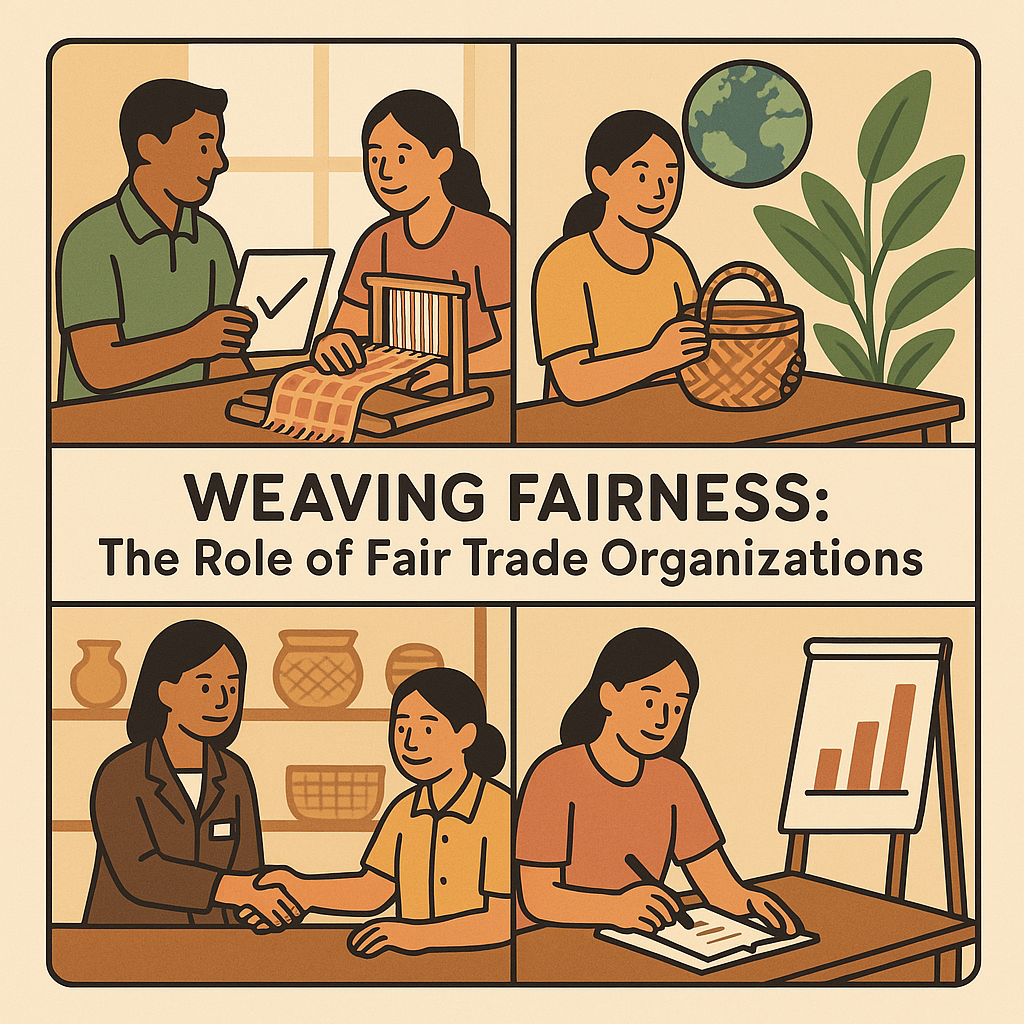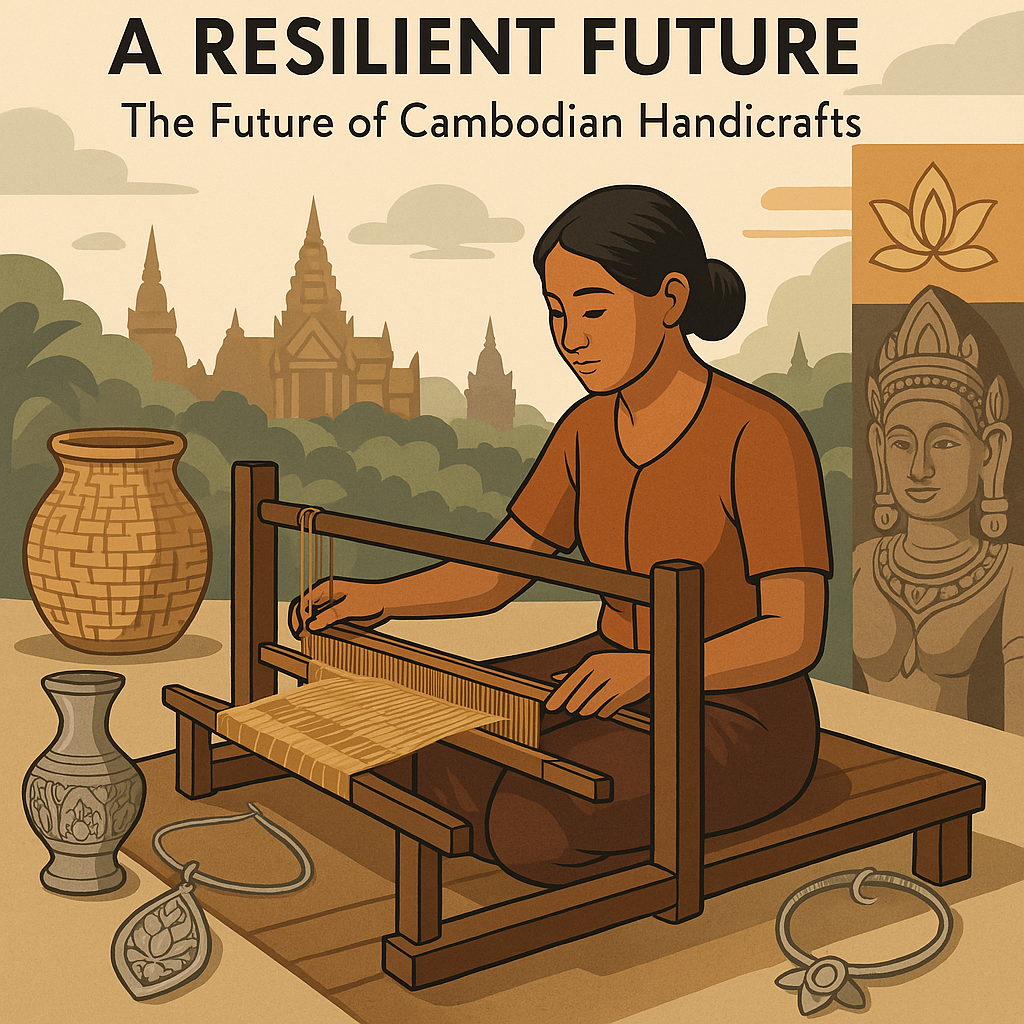Throughout this series, we’ve explored the incredible diversity and artistry embedded in Cambodian handicrafts – from the lustrous sheen of handwoven silk and the intricate details of silverwork to the sacred carvings adorning temples and the practical beauty of village basketry. As we stand here in Cambodia in April 2025, it’s clear that these invaluable traditions, while deeply rooted in history, face a complex present and an evolving future. Navigating the currents of globalization, economic change, and shifting cultural landscapes, Cambodian artisans and their supporters are actively working to ensure these skills not only survive but also thrive.
Tourism’s Double-Edged Sword: Impact on the Handicraft Industry

The return and growth of tourism following global disruptions has been a significant factor for Cambodia’s handicraft sector, presenting both opportunities and challenges:
- Opportunities: Tourism creates a vital market for handcrafted goods, providing income opportunities for potentially thousands of artisans, especially those near major hubs like Siem Reap and Phnom Penh. It raises international awareness and appreciation for Khmer artistry. The demand for unique souvenirs can encourage the production and preservation of visually appealing crafts like weaving, carving, and silverwork.
- Challenges: The pressure to cater to tourist demand can sometimes lead to prioritizing speed and low cost over traditional quality and techniques. There’s a persistent risk of mass-produced imports being misrepresented as local, handmade items, undercutting genuine artisans. The market may favor easily transportable or conventionally attractive items, potentially neglecting more culturally complex or larger-scale traditional crafts. This necessitates conscious consumerism and efforts to educate buyers.
Weaving Fairness: The Role of Fair Trade Organizations

Crucial players in navigating the modern market are the numerous fair-trade organizations, social enterprises, and NGOs dedicated to supporting Cambodian artisans. Groups like Artisans Angkor, Watthan Artisans Cambodia, Manava, the Institute for Khmer Traditional Textiles (IKTT), Cambodian Living Arts (CLA), and many others work tirelessly to:
- Ensure Fair Compensation: Guaranteeing artisans receive fair wages for their skills and labor, allowing them to earn a sustainable livelihood.
- Improve Working Conditions: Promoting safe and healthy work environments.
- Provide Market Access: Connecting artisans directly with domestic and international markets, often bypassing exploitative middlemen.
- Build Capacity: Offering training not just in craft techniques but also in business management, quality control, and design development.
- Promote Sustainability: Encouraging the use of eco-friendly materials (like natural dyes, sustainable wood, water hyacinth) and responsible sourcing practices.
- Preserve Skills: Actively working to revive endangered techniques, document patterns, and ensure knowledge is passed on.
These organizations empower artisans, particularly women, rural communities, and individuals with disabilities, helping to maintain high standards of craftsmanship and cultural integrity.
Handmade vs. Machine Made: The Challenge of Mass Production

One of the most significant challenges facing traditional handicrafts globally, and certainly in Cambodia, is competition from cheap, mass-produced goods. Industrially manufactured items, whether produced locally or imported, often flood the market at prices that handmade items, requiring significant time and skill, cannot match. This economic pressure poses a real threat:
- Devaluation of Skill: It can become difficult for artisans to justify charging prices that reflect their time and expertise.
- Loss of Authenticity: Consumers may opt for cheaper look-alikes, eroding the market for genuine crafts.
- Risk to Livelihoods: Artisans may abandon their craft if it’s no longer economically viable, leading to skill loss.
Preserving handmade traditions requires actively promoting the unique value proposition of handcrafted goods – the quality, the cultural story, the human touch, and the sustainable practices often involved.
Passing the Torch: Educating the Next Generation

The continuity of any craft tradition depends on successfully passing skills to younger generations. This is a critical area of focus for the future of Cambodian handicrafts:
- Addressing the Gap: Many master artisans are aging, and attracting young people to crafts that can be perceived as laborious or offering uncertain income requires a concerted effort.
- Training Initiatives: Various approaches are being employed:
- Formal training in institutions like the Royal University of Fine Arts (RUFA).
- Vocational training centers run by the government or NGOs.
- Workshop-based apprenticeships supported by social enterprises.
- Efforts by organizations like IKTT to create integrated learning communities focused on specific crafts like natural dyeing and silk weaving.
- Making Crafts Relevant: Success often lies in demonstrating that traditional skills can offer viable, respected career paths and can be adapted to contemporary interests.
Ancient Skills, Modern Style: Blending Tradition and Innovation

Perhaps the most dynamic aspect shaping the future is the way Cambodian artisans and designers are blending age-old techniques with contemporary aesthetics:
- New Applications: Traditional weaving patterns appear on modern fashion accessories like scarves, bags, and even shoes. Silk is being used in innovative interior design elements. Pottery techniques are applied to create minimalist homewares alongside traditional forms. Silverwork skills produce sleek, modern jewelry designs inspired by ancient motifs.
- Material Exploration: Artisans experiment with combining traditional materials (silk, rattan) with new ones, or finding new uses for sustainable resources like water hyacinth (
kamplauk). - Design Evolution: Traditional motifs like the lotus, Naga, or intricate
kbachpatterns are reinterpreted in fresh, sometimes abstract ways for graphic design, branding, fine art, and decor. Calligraphy finds new life in logos and contemporary art pieces.
This fusion doesn’t necessarily dilute tradition; instead, it demonstrates its adaptability and relevance, keeping the crafts alive and appealing to new generations and markets.
A Resilient Future

The future of Cambodian handicrafts, viewed from Battambang, is a narrative of resilience and adaptation. While challenges posed by mass production, economic pressures, and the need for knowledge transfer are significant, they are being met with creativity, dedication, and strategic support. The influence of tourism, the crucial work of fair-trade organizations, focused educational efforts, and a vibrant spirit of innovation are all shaping a path forward. The ultimate success will depend on continued support for artisans, conscious choices by consumers valuing authenticity and skill, and the enduring pride Cambodians take in their rich artistic heritage. The spirit of craftsmanship that infuses life across the Kingdom, evident even in the artistic pulse of cities like Battambang, suggests that these traditions, while evolving, will continue to weave, carve, shape, and adorn Cambodia’s future.



